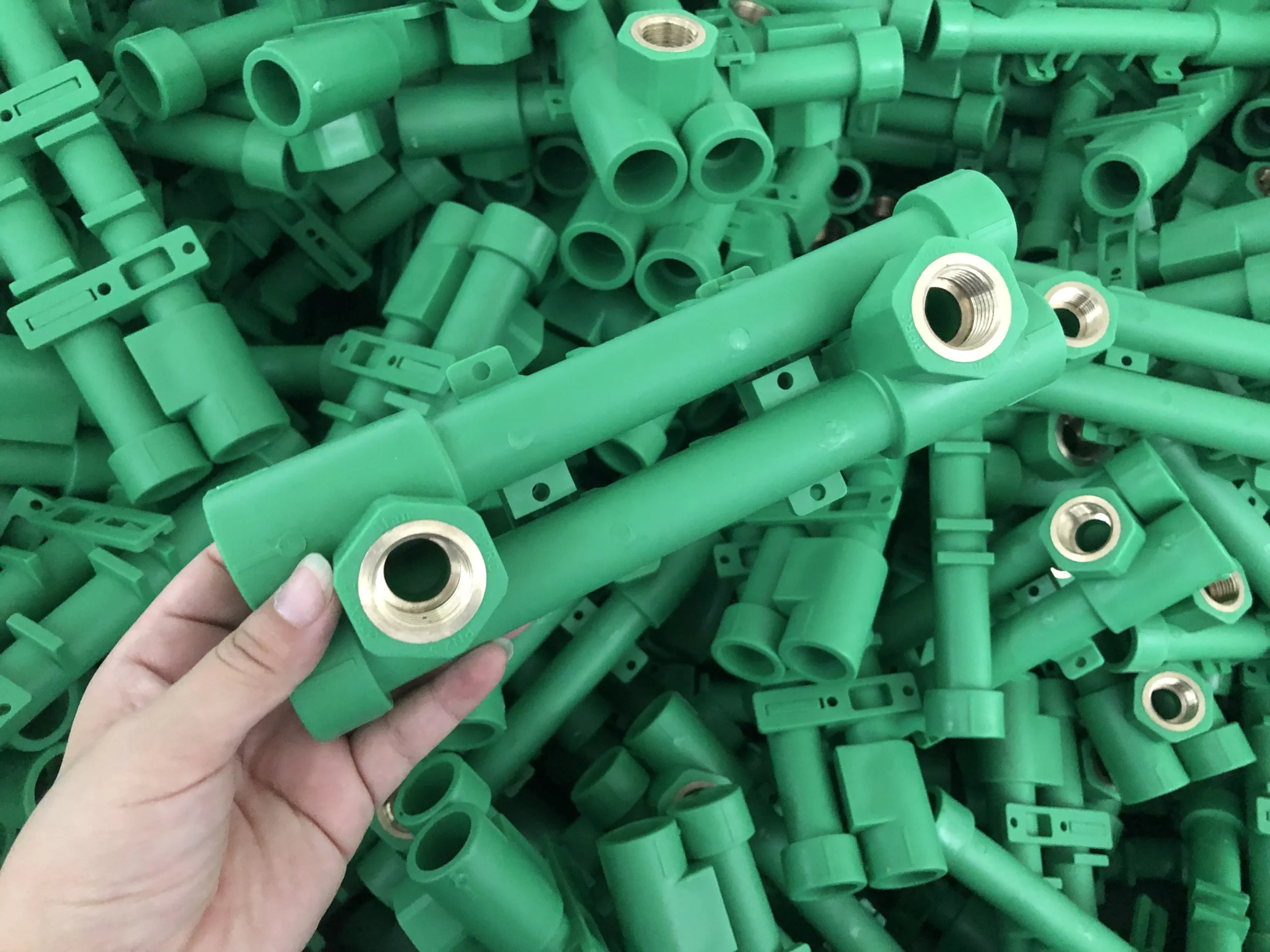Introduction
In the contemporary landscape of construction and plumbing, the quest for sustainable and eco-friendly solutions has become increasingly crucial. PPR (Polypropylene Random Copolymer) fittings stand out as champions of environmental responsibility, offering a multitude of advantages that contribute to a greener and more sustainable future. This article explores the eco-friendly profile of PPR fitting, shedding light on their environmental benefits and the positive impact they bring to plumbing systems.

1. PPR Fittings: A Greener Choice for Plumbing
Recyclability of Polypropylene:
- Endless Recycling Potential: Introduce the recyclability of polypropylene, the primary material in PPR fitting. Unlike certain non-recyclable materials, PPR fittings can be recycled multiple times without compromising their structural integrity, minimizing environmental impact.
- Reducing Resource Consumption: Discuss how the recyclability of PPR fitting aligns with the principles of circular economy. The ability to recycle and reuse materials reduces the demand for new resources, contributing to a more sustainable and resource-efficient plumbing industry.
Energy Efficiency in Production:
- Low Energy Consumption: Highlight the low energy consumption during the production of PPR fittings. The manufacturing process of PPR fitting requires less energy compared to some traditional materials, making them an energy-efficient choice for environmentally conscious projects.
- Carbon Footprint Reduction: Discuss the positive impact on carbon footprint reduction associated with the production of PPR fitting. The lower energy requirements contribute to a decreased overall carbon footprint, aligning with global efforts to combat climate change.
2. Reducing Environmental Impact: PPR Fittings in Action
Less Water Wastage:
- Efficient Water Conveyance: Illustrate how PPR fitting contribute to efficient water conveyance in plumbing systems. The smooth interior surface of PPR pipes and fittings minimizes friction, reducing the energy required to pump water and, consequently, lowering water wastage.
- Conserving Water Resources: Emphasize how the efficiency of PPR fitting aids in the conservation of water resources. In a world where water scarcity is a growing concern, PPR fitting play a role in sustainable water management practices.
Durability and Longevity:
- Extended Lifespan: Discuss the extended lifespan of PPR fitting, contributing to reduced replacements and maintenance requirements. The durability of PPR fittings ensures that they withstand the test of time, minimizing the need for frequent interventions and the associated environmental impact.
- Minimizing Material Waste: Highlight how the longevity of PPR fitting minimizes material waste. With fewer replacements needed, the overall material consumption is reduced, aligning with principles of sustainability and waste reduction.
3. Eco-Friendly Plumbing Solutions: PPR Fittings in a Circular Economy
Responsible End-of-Life Considerations:
- Recycling Initiatives: Discuss the importance of responsible end-of-life considerations for PPR fitting. Recycling initiatives and programs for PPR materials ensure that the fittings can be reintroduced into the production cycle, contributing to a circular economy.
- Reduced Environmental Burden: Emphasize how responsible end-of-life practices reduce the environmental burden associated with the disposal of plumbing materials. PPR fitting offer a solution that aligns with responsible waste management practices.
Environmental Certifications and Standards:
- Compliance with Green Standards: Highlight how PPR fittings often comply with environmental certifications and standards. Certifications such as LEED (Leadership in Energy and Environmental Design) underscore the commitment to sustainable and eco-friendly plumbing solutions.
- Meeting Green Building Requirements: Discuss how the eco-friendly profile of PPR fitting makes them a suitable choice for green building projects. The alignment with green standards contributes to the overall sustainability of construction and plumbing practices.
Conclusion
In conclusion, the environmental advantages of PPR fitting extend beyond their functional role in plumbing systems. As advocates for sustainability, PPR fittings offer a greener choice for construction and plumbing projects, contributing to resource efficiency, reduced energy consumption, and responsible waste management. The adoption of PPR fitting aligns with the global movement toward eco-friendly solutions and represents a significant step forward in building a more sustainable and resilient future. As the plumbing industry continues to evolve, the environmental benefits of PPR fitting position them as a responsible choice for projects that prioritize both functionality and environmental stewardship.
Contact
IFAN is a Chinese manufacturer of plastic pipes, fittings and valves with 30 years of experience. If you are interested in IFAN’s PPR, valves, pipes and fittings, please contact us. IFAN offers you a variety of standard pipes to meet your specific needs. Click below to learn more about IFAN’s wide range of high-quality, cost-effective plastic pipe fittings.
We will reply your email or fax within 24 hours.
You can call us at any time if there is any question on our production.
For more information,pls visit our webside https://www.ifanplus.com/
Pls Mailto: [email protected]






